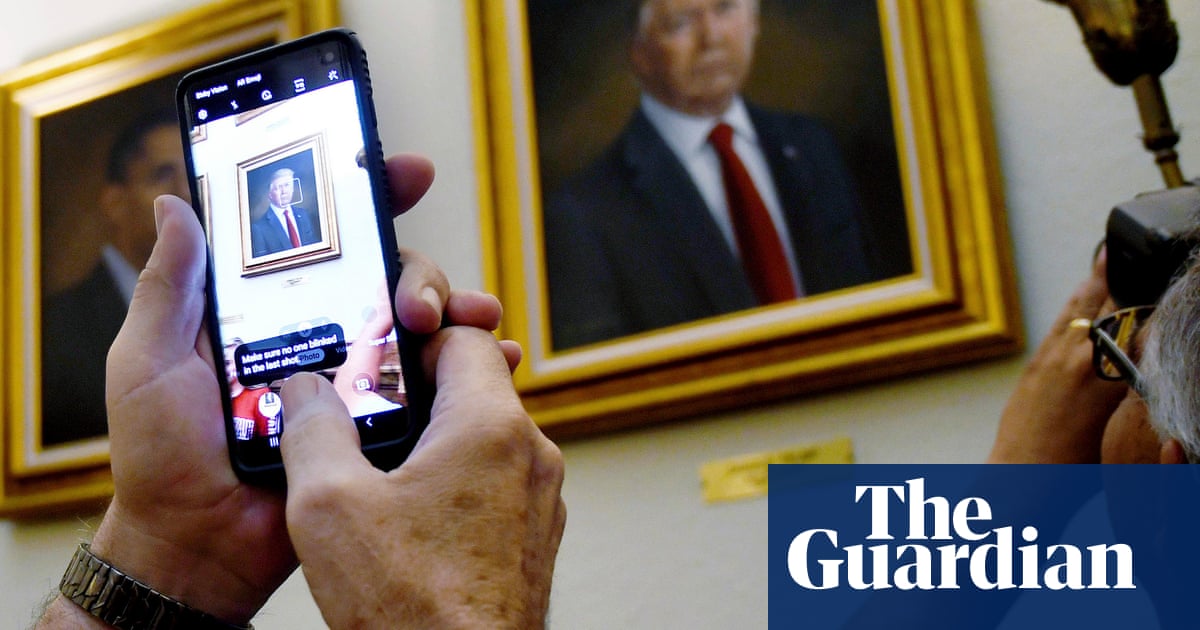The New Presidential Portrait of Donald Trump in Colorado
Months after Donald Trump showcased his discontent regarding an unflattering presidential portrait hanging in the Colorado state capitol, a new rendition now graces the walls, one that has garnered both attention and scrutiny. The former president described the original artwork as “purposefully distorted,” a claim that laid the groundwork for an official replacement that better aligns with Trump’s image.
The Search for the Perfect Portrait
The decision to replace the original portrait stems from Trump’s vocal dissatisfaction with Sarah Boardman’s depiction, which he deemed an unflattering representation of himself. He expressed that he would rather forgo having a portrait than settle for one that misrepresented him. This reaction prompted a search for an alternate portrayal, leading to the recent unveiling of a new painting created by Vanessa Horabuena of Tempe, Arizona. This portrait, reportedly commissioned by the White House, has now been officially donated to the state.
A Closer Look at the New Artwork
The new painting displays an older-looking Trump, presenting a more somber expression compared to his first-term photographic portrait. While the original captured him smiling in the Oval Office backdrop, the latest rendition showcases a glowering figure that emphasizes a different emotional nuance. The physical characteristics of Trump in this painting bear a resemblance to his official second-term photograph, which is prominently displayed in over 1,600 federal buildings across the nation.
The Touch of Vanity
Trump’s penchant for maintaining a certain image is well-documented, and his comments on the original portrait exemplified this trait. He didn’t hold back when critiquing Boardman’s work, stating it was "truly the worst." He quipped about the artist having “lost her talent" over the years, contrasting it with his approval of the portrait of Barack Obama in the same building, which he described as “wonderful.” Clearly, Trump’s desire for an aesthetically pleasing portrayal extends beyond mere vanity; it intertwines with his political persona.
The Circumstances Behind the Change
The original portrait was commissioned after the former Republican Senate President of Colorado, Kevin Grantham, managed to raise $11,000 for it. Despite its funding, the artwork was soon taken down amid requests from other state Republican leaders who preferred a depiction more reflective of Trump’s wishes. The maneuver sparked a debate among Colorado House Democrats, who suggested that if the GOP wished to dedicate resources to such matters, it was within their jurisdiction.
Artistic Intent and Public Perception
In the artistic community, Boardman defended her version, stating it was meant to be neutral—“thoughtful, non-confrontational.” Her intention was to create a portrayal that would age well, allowing Trump to blend into the historical background of presidential portraits. She emphasized that the original base image had received approval from the Capitol building’s advisory committee, raising questions about the intersection of artistic interpretation and political expectations.
Contrasting Portraits and Their Significance
The discourse surrounding these portraits transcends mere aesthetics; it raises deeper questions about identity, representation, and historical memory. The original artwork, criticized for its jowly portrayal, contrasted sharply with Trump’s published mugshot amid his legal battles, framing a complex narrative about the former president. This juxtaposition emphasizes the shifting perceptions of Trump during a tumultuous period in his life and career.
The Broader Implications of Presidential Portraits
Presidential portraits often serve as emblematic representations of their subjects, influencing public perception and historical legacy. The ongoing narrative surrounding Trump’s portraits illustrates how art can be a contentious battleground in political discourse. While Trump seeks an idealized image, artists navigate the fine line between personal interpretation and public perception, each portrait telling a story that resonates beyond the canvas.
The dialogue about these artworks continues to evolve, reflecting the broader culture in which they exist. As the new portrait takes its place in the Colorado Capitol, it stands as a testament to the ongoing intersection of art, politics, and public perception in contemporary America.


